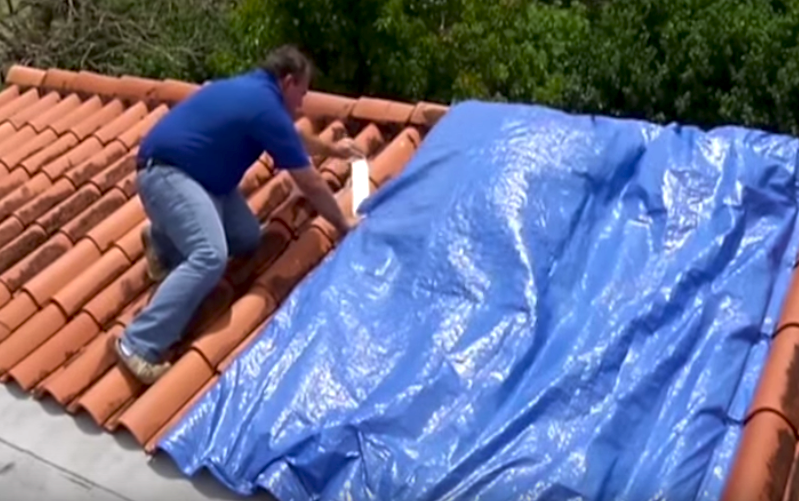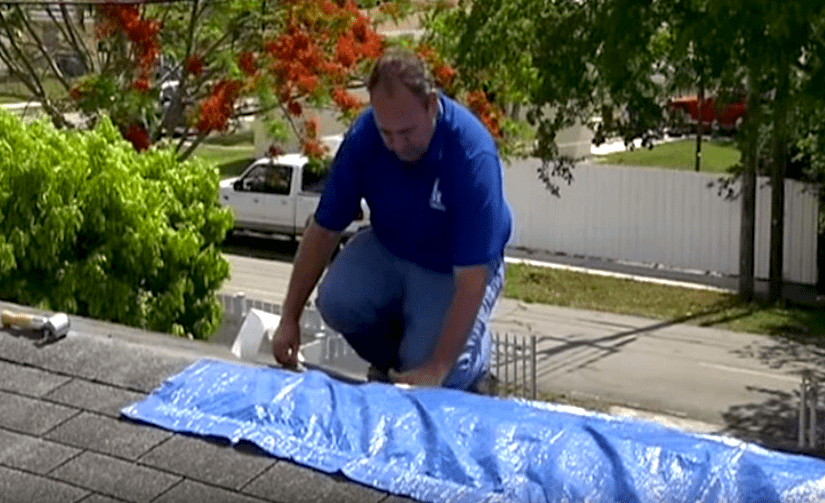How to Install
Get Protection Now with Our Easy Installation Roof Cover
UTARPit™ Installation Instructions
Before reading the steps below, please note the following:
In order for the tarp to work effectively it must be properly installed. Make sure the surface area where you wish to apply it does not have any debris. The tarp works best if the area is dry. If the area is wet, go over the designated area with a heat gun or torch for a minute or two in order for the adhesive to adhere. If there is snow, around 32 degrees, make sure you clean out the snow as much as possible and torch the perimeter where the adhesive is going to be placed. If the roof is frozen, defrost the area with a torch and follow the same steps.
- 1
After reading the important instructions sheet, gather your materials: ladder and self-adhesive roof tarp.
- 2
Make sure that the roof surface where you plan to install your tarp is clear of debris or any loose roof tiles/shingles.
- 3
Make sure there are no sharp or protruding objects where you are planning to place the tarp.
- 4
Always begin installation of tarp just below where the roof damage commences or starts and work your way up to the roof ridge.
- 5
Always begin installation at a bottom corner and slowly peel back release paper as you press the tarp against the surface. Apply one side of the tarp next, followed by the opposite side and lastly the top.
- 6
Please be aware that once you expose the adhesive and press down the tarp onto your surface, you will not be able to reposition it, therefore use extreme caution when installing this product.
- 7
If installing this product on any other type of surface other than shingle or flat roof it is very important that the release paper is removed slowly as you are contouring your tarp to your roof surface.
- 8
To avoid water accumulation if you have a big hole in the roof, a piece of plywood should be installed over the opening prior to applying your tarp.
- 9
Product is designed to be removed by a roofing professional by disposing the damaged area it is adhered to or using a hot solvent. If customer must remove the tarp without a professional, begin by peeling the tarp as much as you can. Goo-Gone or any other solvent suitable for your roof type may facilitate the removal process and residue.
 [wp-video-popup id=”video-1″ video=”https://youtu.be/f4cOZxpjMqs”]
[wp-video-popup id=”video-1″ video=”https://youtu.be/f4cOZxpjMqs”]UTARPit™ Barrel Tile Installation
 [wp-video-popup id=”video-2″ video=”https://youtu.be/2Qh6Wvfg6FY”]
[wp-video-popup id=”video-2″ video=”https://youtu.be/2Qh6Wvfg6FY”]UTARPit™ Shingle Tile Installation
